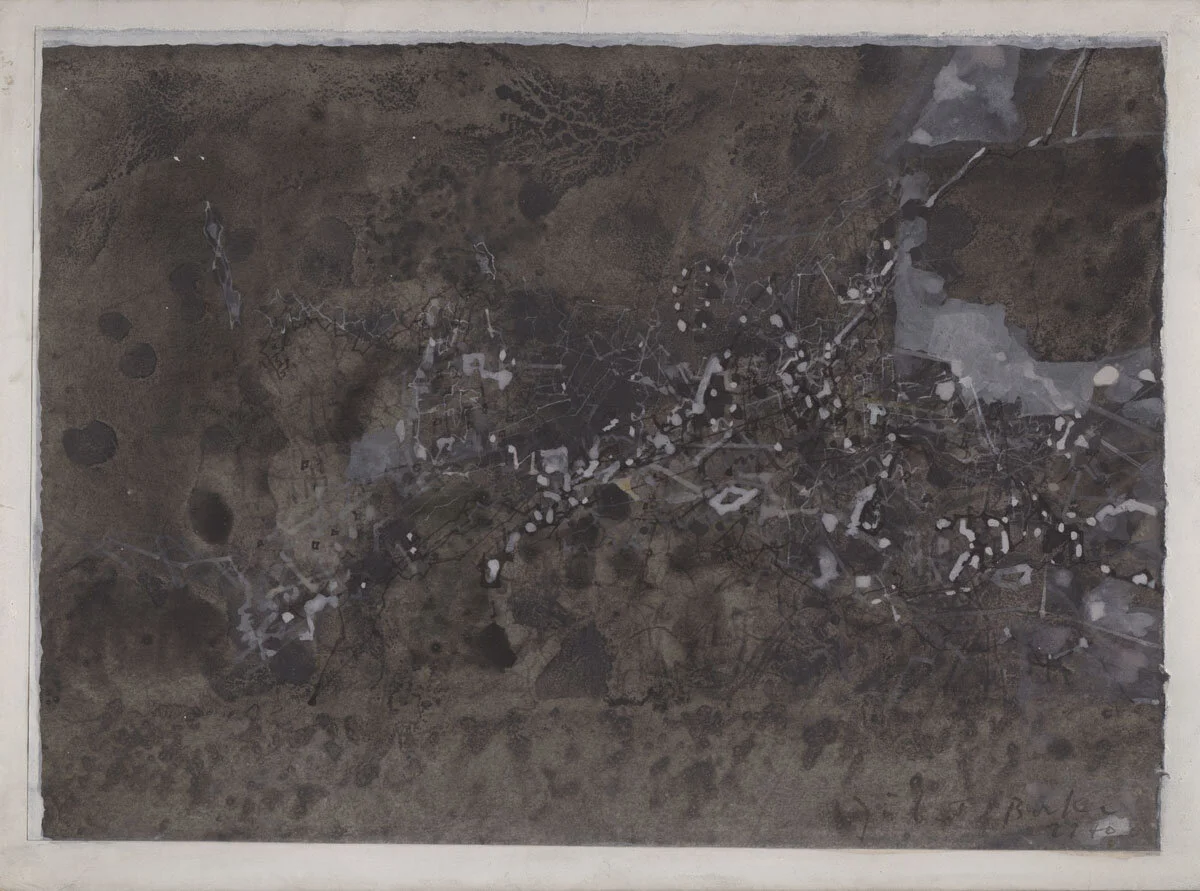Hubert Berke | Abstraktion EN
Hubert Berke ǀ Wege der Abstraktion
ONLINE 01/28/ – 03/05/2021
Prices on request
kontakt@kunsthandel-maass.de
Hubert Berke | Wege der Abstraktion
Today Hubert Berke is considered one of the most important representatives of the lyrical abstraction (Informel) in Germany.
Born in 1908 in Buer/Westphalia, Berke initially studied languages, philosophy and art history and intermittently pursued the plan to become a missionary in China before transferring to the Düsseldorf Art Academy in 1932. There he received important inspiration from his teacher Paul Klee, which formed the basis of his artistic development. Freely following the principles of the master, for which a dialogue with nature should remain "Conditio sine qua non" for the artitst, the content and questions of human existence - but never purely formal - remained in the foreground of Berke's artistic composition. Nature became a constant source of inspiration for him, to which he repeatedly returned and which formed the starting point of his artistic creative process.
Upon Klee's dismissal by the National Socialists in April 1933, Berke also left the academy and returned to his hometown of Gelsenkirchen/Buer in Westphalia.
After his return from captivity as a prisoner of war in 1945, Hubert Berke, along with Hann Trier, Joseph Fassbender, Georg Meistermann and others, was one of the co-founders of the Alfterer Donnerstags Gesellschaft, a kind of interdisciplinary cultural meeting place that provided trend-setting impulses for the art of abstraction in post-war Germany.
In 1951 Berke was accepted into the newly founded artist group ZEN 49 - another consistent step in Berke's path to abstraction. Having had a pronounced interest in Far Eastern teachings since his school days, membership in the ZEN 49 group suited Berke's working method and attitude - detachment, self-liberation, quiet contemplation and concentration - the act of painting, the pictorial process of creation, thus moved to the fore.
From then on, some of his works show a reduction of the color palette analogous to Eastern ink painting, as well as the steep vertical format reminiscent of Chinese scroll paintings.
Hubert Berke was a universal artist who never completely overcame his roots in the figurative on his way to abstraction. The boundaries between abstraction, figuration and the Informel in his work are fluid. Typical of artists in post-war Germany, Berke also bridges the gap between classical modernism and post-war abstraction, eventually finding himself in the Informel movement, and in the end also following post-Informel tendencies. Moreover, Berke brings the heritage of European art into dialogue with Far Eastern traditions.
"His path to abstraction was led by the autonomy of formal values from their representational ties; he arrived at a direction determined by the poignant expression of movement and the abstract impressionism of colors, with which psychic experiences of reality could be identified. For Berke, who had been fascinated by East Asia from his youth, this inclination led to spiritual correlation with Zen philosophy and an interest in ink painting and calligraphy of the East."
(quoted after Antje Birthälmer, Hubert Berke - der Künstler in seiner Zeit, in: Hubert Berke, Masken im Sumpf, ed. by Sabine Fehlmann and Werner Schäfke, Cologne 1992, p. 32.)
Hubert Berke died on November 24, 1979 in Cologne-Rodenkirchen.








